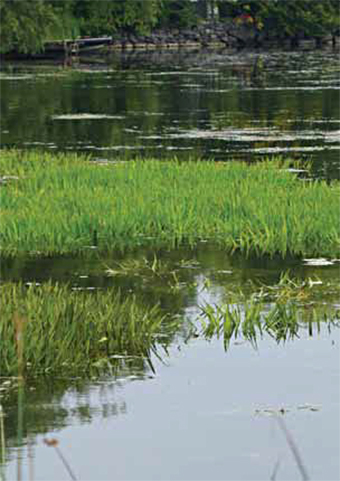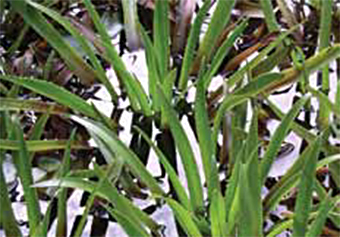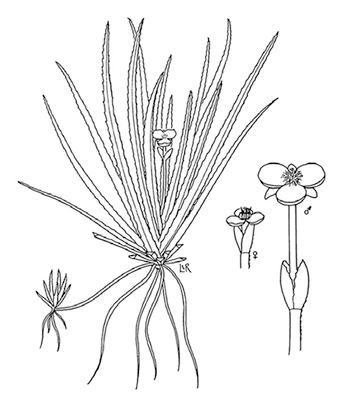Water soldier
What you need to know about the water soldier. Includes habitat, identifying features and what you can do to reduce its impact.
Background
Water soldier (Stratiotes aloides) is an invasive perennial aquatic plant that is native to Europe and northwest Asia. In Ontario, populations of water soldier are found in the Trent-Severn Waterway, the Bay of Quinte in Lake Ontario, Red Horse Lake (North of Gananoque) and in Cook’s Bay in Lake Simcoe. Water soldier is used as an ornamental plant in water gardens, which may have introduced it to Ontario. Currently, work is ongoing to assess and manage these infestations.

Impacts
- Forms dense mats of floating vegetation.
- Crowds out native vegetation resulting in decreased plant biodiversity.
- Has the potential to alter surrounding water chemistry, which may harm phytoplankton and other aquatic organisms.
- Dense floating mats of water soldier can hinder recreational activities, such as boating, angling and swimming.
- Sharp serrated leaf edges can cut swimmers and individuals who handle water soldier plants. Caution should be taken whenever handling the plant.
It is important to prevent the plant’s introduction and spread to new locations. The ministry, with support from other government agencies and partners, including conservation authorities, Indigenous communities and NGO's, is monitoring and tracking the spread of water soldier and undertaking a variety of control measures to prevent its spread to new locations.
How to identify

Water soldier is similar in appearance to an aloe plant, spider plant or the top of a pineapple. Water soldier may be confused with other aquatic plants in Ontario, such as native bur-reeds, arrowheads or eel-grass. However, none of these plants has serrated leaf edges, which can be used to easily distinguish water soldier from these other aquatic plants.
Stratiotes aloides Water soldier, Water aloe.

Other identifying features and characteristics of this plant include the following:
- It is a submerged aquatic plant which becomes buoyant during the summer months. As the leaves mature, they become waterlogged and the plant sinks below the water’s surface.
- Leaves are 40 cm long, sword-shaped, bright green, with sharp spines, and form a large rosette, or group of leaves arranged in a circle.
- Flowering has not been observed in Ontario plants. However, if present, flowers are white with three petals, developing into 1 to 3.5 cm long fleshy berries — each containing up to 24 seeds.
- Roots can be, but are not always, attached to the mud at the bottom.
- Plants can be found growing in depths of up to 5 m
- Mature water soldier plants produce offsets, which are like those produced by the household spider plant. Offsets look like smaller versions of the adult plant.
What you need to know
- Learn how to identify water soldier and how to prevent accidentally spreading the plant with your watercraft.
- Avoid infested areas or reduce your speed when traveling by water soldier infestations. Boat wake can dislodge plants and offsets and allow them to spread to new areas.
- Inspect your boat, trailer, and equipment after each use. Remove all plants, animals, and mud before moving to a new waterbody.
- Avoid planting water soldier in your water garden or aquarium. Water gardeners should only use native or non-invasive plants and are encouraged to ask garden centers for plants that are not invasive.
- Report sightings to the Invading Species hotline
1-800-563-7711 or visit Ontario’s Invading Species Awareness Program

For more information, please
Contact the Invading Species hotline at
Cette publication est également disponible en français.